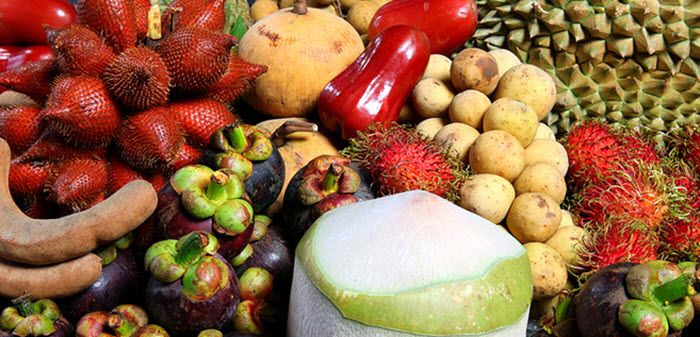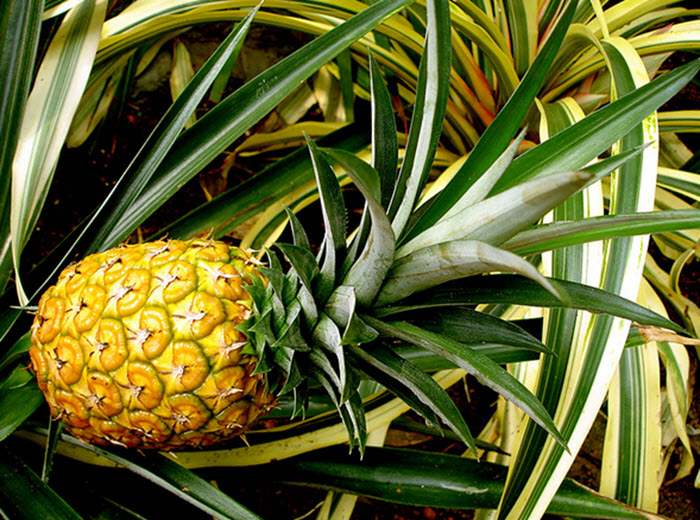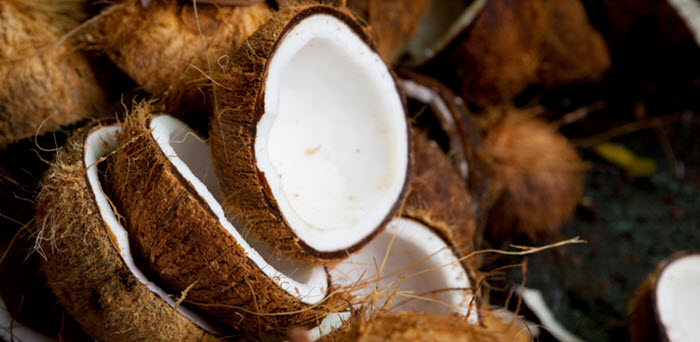Thai cuisine
One notable characteristic of Thai cuisine is how a dish or drink tend to be an interesting balance of at least three fundamental taste senses. Instead of being just a spicy dish or just a sweet desert, a Thai dish will often juggle spiciness, sweetness, sourness, saltiness and/or bitterness.
Examples of Thai dishes that are well-known even outside of Thailand are tom yam goong, pad Thai, moo nam tok and som tam.
A very common configuration for the main meal of the day is to base it around five parts:
- A clear soup, such as tom yam or tom chuet
- A stir fried dish, often a protein rich one with meat, fish, seafood or similar
- A deep-fried dish
- A curry or a stew, sometimes accompanied by rice or noodles
- A dip or relish (khrueang chim) for raw or cooked vegetables

Eating
Traditionally, Thai food is eaten with the right hand, but nowadays forks and spoons are very common not just in restaurants but in private homes as well. Still, many Thai dishes are eaten by making a small ball of sticky rice and dipping it into side dishes without the need for utensils. Eating with a fork and spoon was introduced by King Chulangkorn when the returned home after a tour of Europe in the late 1800s. Knives are generally not used for eating in Thailand, but are available at restaurants that cater to foreign tourists.
Chinese immigration introduced chopsticks to Thailand and Chinese-style dishes, such as noodle soup, are sometimes eaten with chopsticks even by non-Chinese diners in Chinese, Japanese and Korean restaurants.
Regional cuisines
Thai cuisine can very broadly be divided into four regional cuisines, where each regional cuisine is a reflection of the area’s naturally available resources as well as its exposure to influences from the outside.
Northern Thai Cuisine
This cuisine is native to the lush valleys and cool forested mountains of northern Thailand. There are a lot of similarities between northern Thai cuisine and the food eaten across the border in the Yunnan Province of China, in the Shan State of Burma and in the northernmost part of Laos.
Chiang Rai, the northernmost province of Thailand, used to have a provincial slogan that hailed the province as a “repository of culture, the most delicious rice, sweet and fragrant litchi, beautiful women, the finest flavoured tea, pineapple from Nang-Lae, source of the giant catfish”.

Northeastern Thai Cuisine (Isan cuisine)
This region is dominated by the comparatively dry Khorat Plateau, but there are plenty of streams, rivers and ponds here that can be used to flood paddy fields. A majority of the cultivated land in Isan is used for growing sticky rice, and it is possible to get two harvests per year. Unsurprisingly, sticky rice is a staple in the region. The Nong Khai Province along the Mekong River is renowned for its pineapples and tomatoes. The main animals raised for food in Isan are cattle, pigs, chickens, ducks and fish.
Along the border, the Isan cuisine is heavily influenced by Laos cuisine, and also by Khmer cuisine to the south and Vietnamese cuisine from the east.
Central Thai Cuisine
Central Thailand is the broad alluvial plain of the Chao Phraya River. It was the heartland of the Ayutthaya Kingdom, and is now the most populated region of the nation. Bangkok, Thailand’s capital and largest city, is found within this region.
The cuisine of the central region has – among other things – been influenced by the cosmopolitan palace cuisine of the Ayutthaya Kingdom (1351–1767 CE). Today, the cuisine is also influenced by the fact that Bangkok is an international metropolis that attracts visitors and migrants from all over the world.
Southern Thai Cuisine
Southern Thailand is located on the Malay Peninsula and only connected to the rest of Thailand by the narrow Kra Isthmus. You’re never very far from the coast when you’re in southern Thailand, and this has of course had a major impact on the traditional cuisine. The steep western coast faces the Andaman Sea, while the eastern coast with its river-plains landscape is facing the Gulf of Thailand.
The largest of the southern provinces is Surat Thani, famous for its large production of coconuts and rambutan. Many of the dishes from southern Thailand include coconut milk, often together with fresh turmeric. Surat Thani is also where you find the local specialty red eggs. They are laid by ducks kept on a diet of crabs and fish.

Cosmopolitan Thailand
For more than half a millennium, Chinese immigration has had a major impact on Thai cuisine and many of the dishes we see as very Thai today have Chinese roots, e.g. kuatitiao rat na, salapao, chok and kaho kha mu. The Hokkien people started migrating from China to Thailand in the 15th century, and were followed by the Teochew people in the 18th century. The Teochew chiefly settled in towns and cities, and thus had a larger impact on urban cuisine than on rural. Chinese migration is responsible for the introduction of the wok to Thailand, as well as the tradition of deep-frying and stir-frying food. Examples of food products that the Chinese helped popularize in Thailand are tofu, soy sauces, taochiao and several types of noodles.
From the west came another important wave of new products and new cooking habits. Traders brought dried spices from Persia and India, such as cinnamon and star anise. Later on, settlers adapted Persian and Indian recipes to Thai conditions and created dishes such as kaeng kari and kaeng matsaman.
In 1511 CE, the first European diplomatic mission arrived at the court of Ayutthava. These diplomats came from Portugal, and the mission was the start of a long period of cultural interchange between the two countries. Sangkhaya, also known as coconut custard, is one of the results of this exchange. Making Portuguese custard proved difficult in Thailand since there were no milk cows, but the problem was solved by using coconut milk instead – and so the sangkhaya came into existence. Another example of a Thai-Portuguese dish is the sweet foi thong, based on the Portuguese desert fios de ovos.
From the 16th century and onwards, international trade brought a host of products from North and South America to Thailand, including a lot of fruits and vegetables that could be grown in the Thai climate. This is how now so essential products such as chili pepper, corn, tomatoes, cilantro, cashew, peanut, papaya, pineapple and pea eggplant entered the Thai cuisine.
